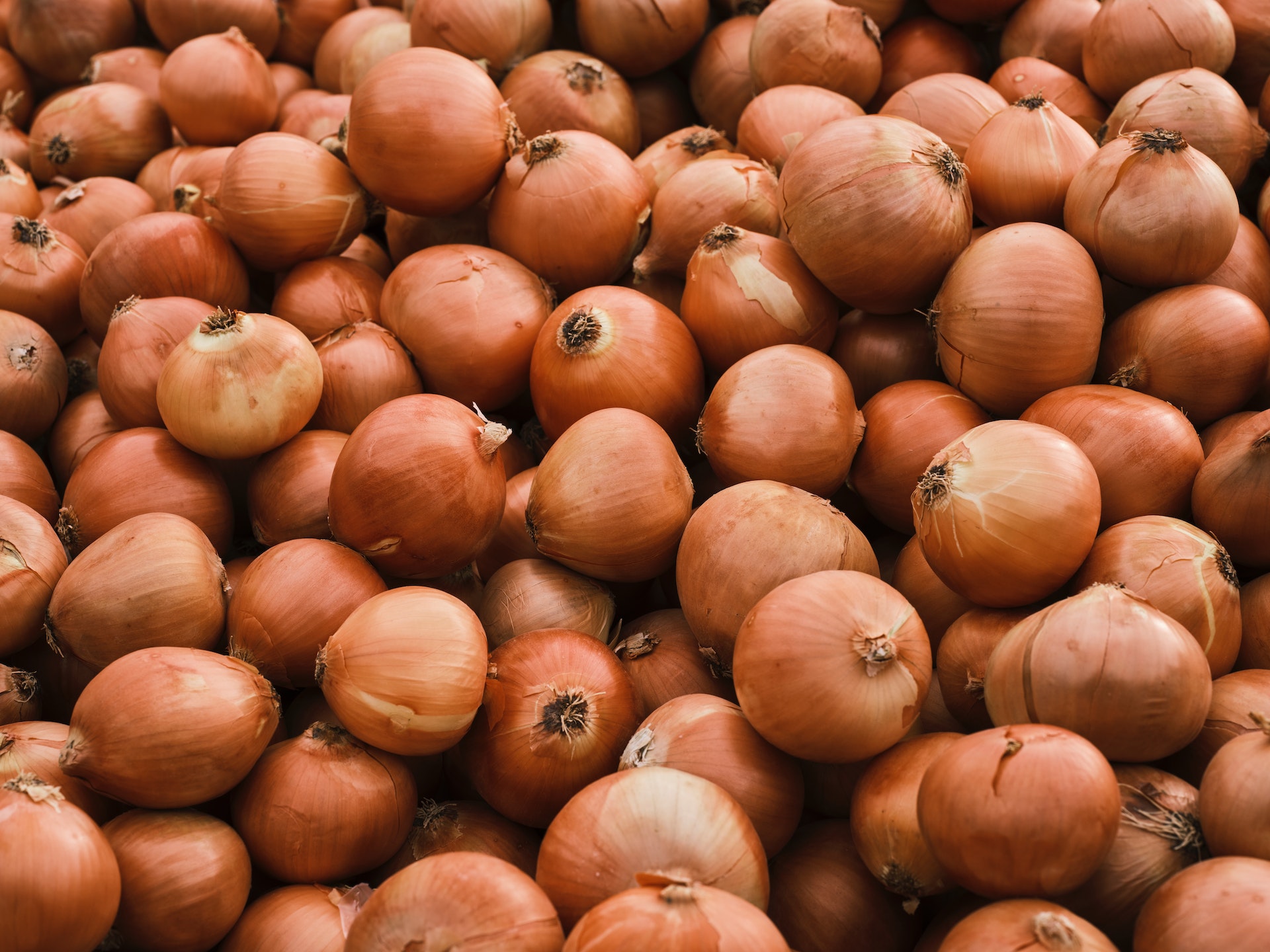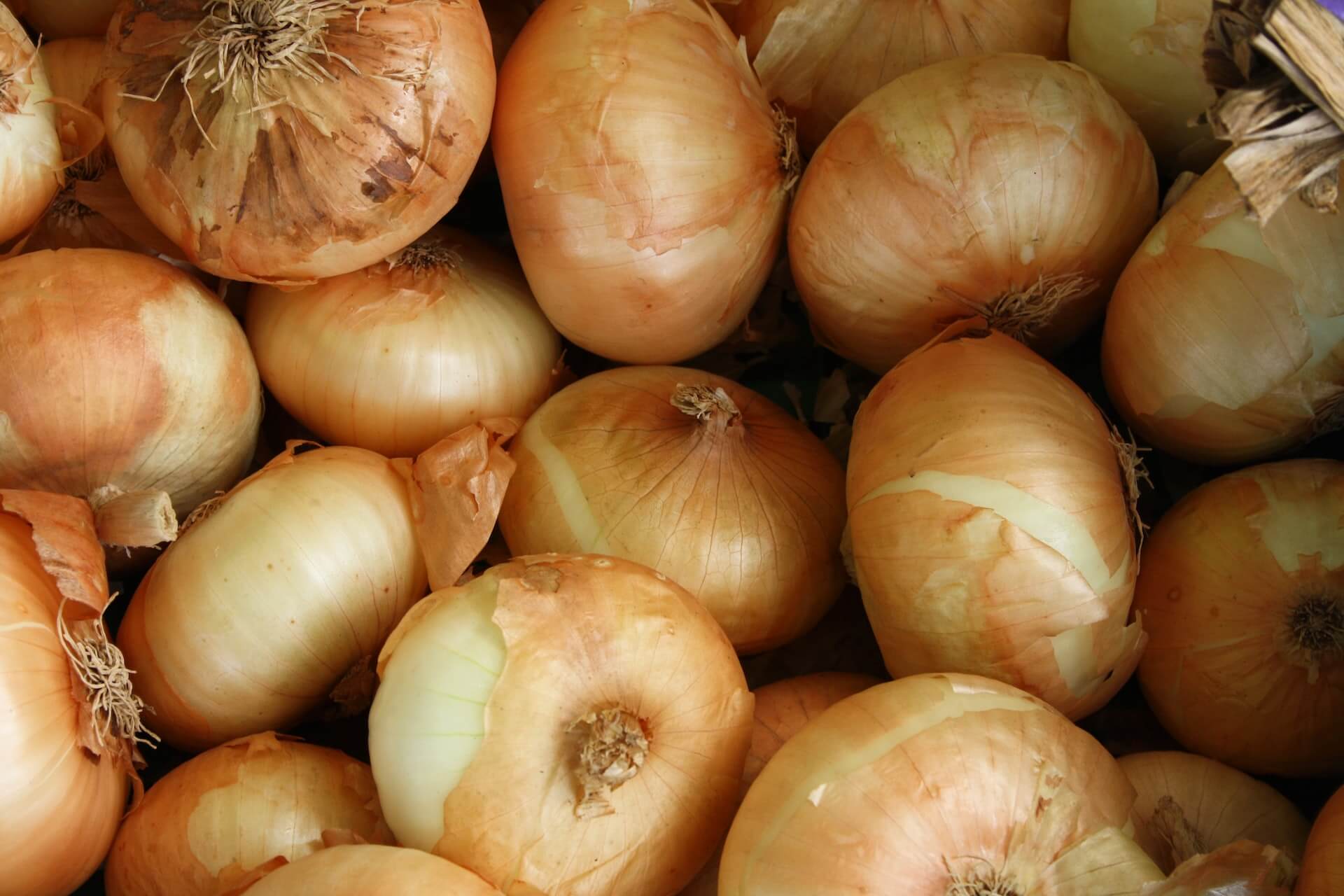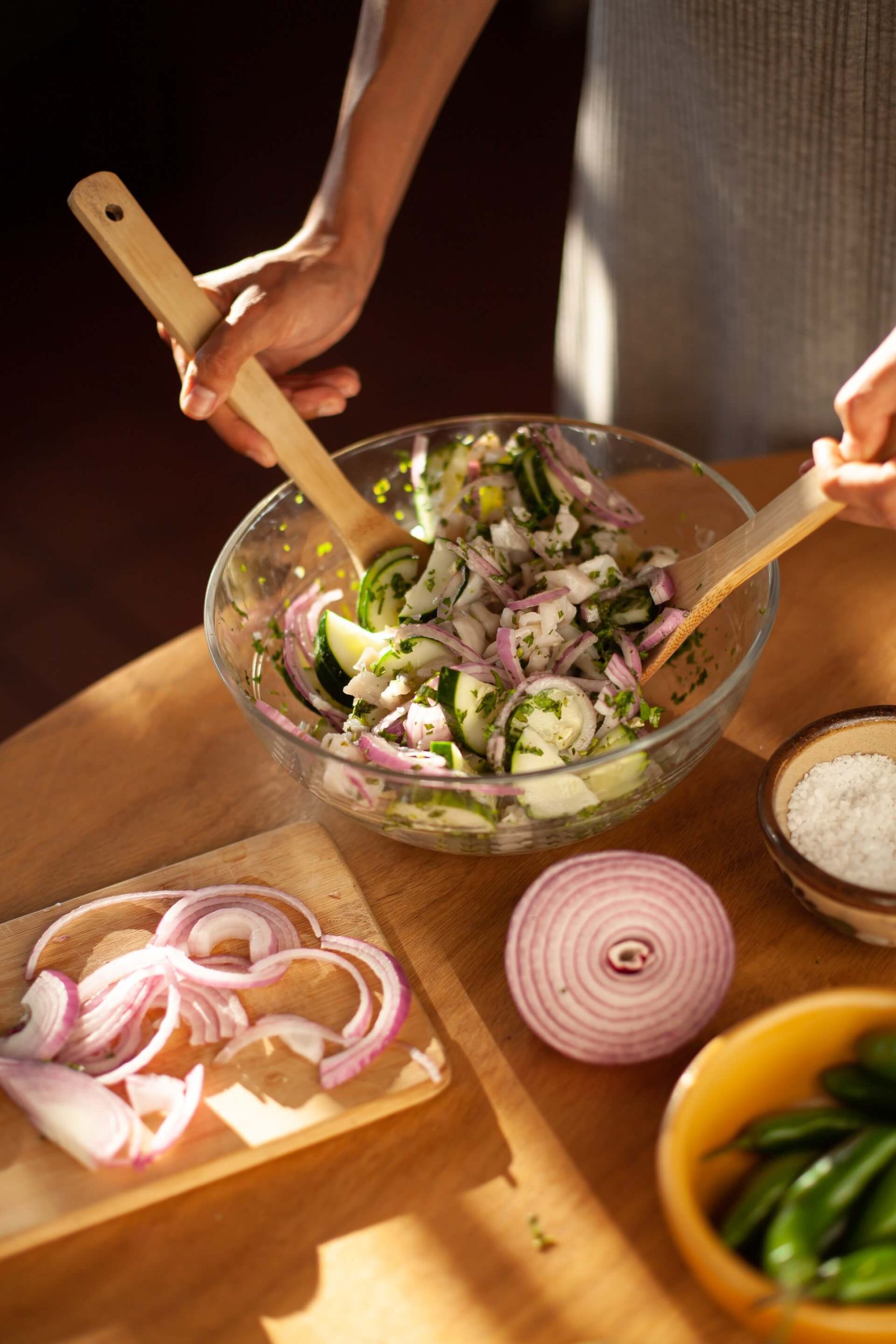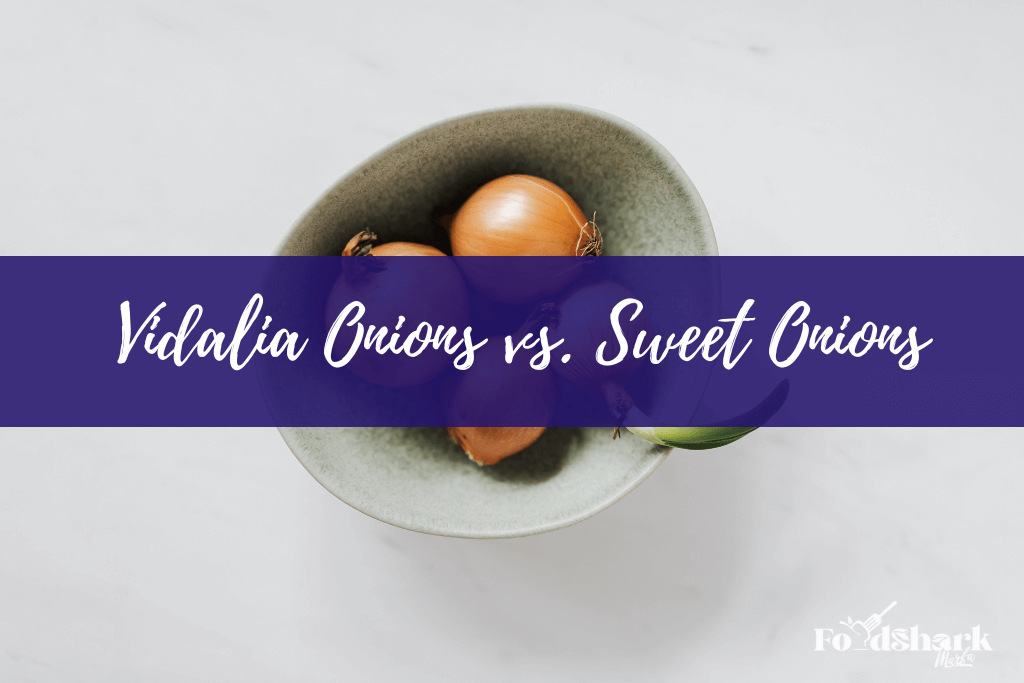Sweet onions are the type of onions that are not pungent in taste like traditional onions, but rather sweet in taste and mild in flavor. Sweet onions are renowned for their greater size, mild and sweet flavor, and thinner peel than other types of onions.
In a particular region of Georgia, in the United States of America, a particular variety of sweet onions known as Vidalia Onions is farmed.
Even though Vidalia onions are a sub-type of sweet onions, they have some distinguishing features that separate them from other types of sweet onions. All Vidalia onions are sweet onions, but not all sweet onions are Vidalia onions.
What Are Sweet Onions?

According to Wikipedia, in comparison to other onions, sweet onions have a more subdued flavor and a sweeter taste. This is because sweet onions contain a lower concentration of sulfur and a higher concentration of water.
Sweet onion skins are pale tan to pale gold. The skin is also thinner and easier to peel than onions with darker, thicker skins. Some of the most well-known types of sweet onions include Vidalia onions, Walla Walla onions, Maui onions, and other similar species.
What Are Vidalia Onions?

Vidalia onions are a variety of sweet onions. It has a mild flavor, a distinctive flat shape, and a high sugar content. Vidalia onions get their name from the town where they were historically cultivated, Vidalia, Georgia.
Nowadays these are produced in one of the 20 South Georgia counties designated under Federal Marketing Order No. 955. Vidalia onion was named Georgia's state vegetable in 1990.
How Are Vidalia Onions Different From The Other Sweet Onions?
As mentioned above, Vidalia Onions fall under the sweet onion variety of onions. As a consequence, there are very few differences that distinguish this sub-type from other sweet onions.
These few differences, however, are significant as these qualities make Vidalia onions so sought after in the markets.
The difference in appearance
According to vidaliaonions.org, the shape, variety, identification code, and location distinguish this onion from other sweet onions. Vidalia onions have a unique flat shape that cannot be seen in other sweet onions.
Other sweet onions also have a flatter shape when compared to other types of onions, but not quite as flat as Vidalia onions.
The difference in Use
Due to having less milder flavor, sweet onions are great for using raw. You can use them as toppings on your pizza, add them as a garnish to your roasted meat, or as an ingredient of a fresh salad.
If you want to substitute your regular onion with sweet ones, make sure to amp up the number of onions in your dish to achieve the regular taste.
Again, Vidalia onions are great for caramelizing and sauteing as they have higher sugar content. They are also larger in size than regular onions, making them the perfect candidate for onion rings. You can also make onion jams from caramelized Vidalia onions.
The difference in Price
Vidalia onions are grown in only one specific area of the USA. As a result, they can cost twice as much per bag compared to a standard yellow onion. In Georgia, they cost about $1.25 per pound.
On the other hand, regular sweet onions are cheaper than Vidalia onions, costing about 83 cents per pound according to Walmart listings.How To Store Sweet Onions And Vidalia Onions?
The high water content in sweet onions as well as Vidalia onions makes them milder in taste. However, it also makes them susceptible to bruising along with shortening their shelf life. Some tips and techniques will help them with their longevity.
According to the University Of Georgia Website, the simplest approach to preserve Vidalia onions is to take each bulb and wrap them in a dry paper towel, and then place them into the freezer with all the vents closed. This will help manage moisture, and thus increase the lifespan of your Vidalia sweet onion.
Again, another interesting hack to store sweet onions is to use clean pantyhoses. In this technique, you need to take each bulb and place them one at a time inside the pantyhose, all while tying a knot between each bulb.
After that, you need to hang them in a dry, cool, and well-ventilated place. You can cut under the knot of each onion every time you need to use one. Sweet onions can be stored in pantyhose for four to six months.
You can also opt for freezing the onions if you want to use them all around the year. However, frozen onions can be used only for cooking purposes, as freezing changes the texture of the onions and makes them unusable for fresh toppings or fresh salads.

Which Onions Are Better?
Both onions are great vegetables when it comes to their taste, flavor, and the variety of ways they can be used and stored in. However, the Vidalia onion is grown from a yellow granex seed variety.
The seeds are tested for three years at a minimum. The careful and extensive procedures the seeds have to go through to ensure proper quality make these onions extra-ordinary and rarer to find in the market.
Thus, if we factor in the process of growing Vidalia onions as well as their market demand, they are certainly superior to regular sweet onions.
Now that you know that Vidalia onions are the better kind, you can get onion choppers online and start your cooking journey with Vidalia sweet onions!Conclusion
To sum up, Vidalia onions are a type of sweet onion that is larger, milder, and sweeter than regular onions, with thinner peels. Sweet onions are different than Vidalia onions in terms of appearance, usage, price, and so on.
However, both types of onions are delicious and healthy food options. If you store them well, you can use them all throughout the year for your cooking.


